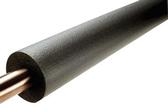
Manual lighting controls obviously help regulate how much energy you’re using, and dimmers again can reduce the amount of energy being consumed. A warning though – some do consume extra power.

How do switches work?
As we all know, switches are used to turn things like lights, fans and other appliances off and on, as well as controlling supply to power points. They do this by closing or completing a circuit when they’re switched on, allowing electrical current to flow through the circuit. When a switch is turned off, the circuit is effectively open, preventing electricity from flowing.
Switches are easily taken for granted, but they’re a very important element in any home. They have to connect and disconnect electrical power without arcing, and protect the user from any risk of electrocution. Likewise, switches and switch plates are increasingly being seen as another design element in the home.
Switches and water resistance
If the switch is mounted outdoors or anywhere near water it has meet specific standards to ensure that water can’t enter the switch. Water is an excellent conductor of electricity – so much so that in the wiring codes of the UK, switches have to be installed outside the bathroom.
Switches and other electrical fittings are rated for their ability to protect against the ingress of water and other substances, by IP (‘Ingress Protection’) ratings. Under the IP code, these are numbered according to their abilities, as IPXX – where ‘XX’ is a two digit number. The first digit in the IP rating refers to solid foreign objects, like dust, and the second digit refers to liquid protection. For example, IP65 would have complete protection against entry of dust and protection from a low-pressure jet of water from all practicable directions.
Some switches are of the membrane type. This type of switch has its dolly (the moulded part used to operate the switch) separated from the live electrical parts by a membrane. This type of switch is highly recommended for use in wet areas, bathrooms, laundries, etc.
Switches and dimmers
There are two main types of dimmers – the low voltage and the mains (240 volt) voltage one. Without getting too technical, modern dimmers use semiconductors to switch power on and off at a fast rate – in the 240 volt type, this happens 100 times per second. The overall impression is of a smoothly varying light level because the dimmer, in effect, takes a slice of electric power in each cycle (240 volt power is supplied as alternating current – 50 cycles per second).
Older types of dimmers use potentiometers, thyristors and various other technologies, all of which had significant disadvantages in terms of efficiency and heat. Depending on the technology they use, dimmers can waste in the order of 10% of the power being used – it’s worth investigating what you’re getting when you’re shopping for dimmers.
Dimmers for low voltage lighting
Low voltage lighting (like 12 volt halogen lighting) uses electronic transformers to allow lights to be dimmed. These dimmers are a bit more complicated, but still use the same idea as the 240 volt dimmers. Your electrician will be able to advise you on the type you need (‘leading edge’ or ‘trailing edge’).
Switch designs, styles and colours
Switches come in all sorts of different styles, colours and finishes, and if you’re serious about interior design it makes good sense to select switches that complement the rest of your home. Discuss your options with an interior designer for inspiration, or take the time to browse some catalogues to get an idea of what’s available and how it will fit into your home.
Ganged switches
Ganged switches are switch plates that feature more than one switch, allowing you to install all of your switches in the one location. Using ganged switches will allow you to keep everything together, which in turn may also give you greater freedom in terms of where you position furniture.





